Interested in starting to add a few cups of tea to your daily liquid intake? The health benefits of doing so are myriad, and I discussed a few of them in a previous article that outlined health effects by types of tea.

That being said, most health professionals recognize the amazing medicinal qualities of the various teas available. But you have to brew correctly, not only to get the best taste, but also to reap the most from those potential health advantages.
In this article, we will be covering all the basic equipment you will need to include the best teapots to purchase as well as how to choose a proper kettle.
We will also explore the correct method for brewing whichever type of tea you choose. I want to state first, though, that this article is specifically geared toward learning how to brew loose leaf.
If you plan to make the jump to becoming a religious tea drinker, you need to forget about tea bags altogether.
Loose leaf tea will consist of either entire leaves of the smaller size, big pieces of the larger leaves, or sometimes a combination thereof.
Tea bags will contain tiny pieces of leaves or what are known as “fanning,” basically a dust.
While this may ensure that the drink brews more quickly, it will also lack the subtlety and complexity of the beverage when made from loose leaf, and will also have a harsher flavor.
Additionally, most loose leaf varieties can be re-steeped for multiple uses, something that you simply cannot do with most bags.
Get Set Up
I like to set out my cup or mug and get the leaves ready before I worry about getting my water ready. That way, once the water is at the correct temperature, I don’t have to rush around, hurrying to finish my prep before the water gets too cold.
First, you need to know how much tea to use.
The following measurements are for an 8-ounce serving. If you prefer your beverage on the stronger side, use the larger serving size.
For white tea, you will need 1-2 teaspoons to make hot tea and 2-4 teaspoons if you’re making iced. Green, oolong, or black varieties require 1-1 ½ teaspoons for hot and 2-3 teaspoons for iced.
For Mate, Rooibos, or herbals like peppermint and lavender, use 1 ½-2 teaspoons of loose leaves or buds for hot and 3-4 teaspoons for iced.
Steeping Equipment
You have a few choices when it comes to how to get your leaves ready to steep.
The first is to simply put the desired amount of tea leaves directly into your cup. Yes, you’ll be drinking the leaves themselves, but apparently for some folks this is not an issue.
Supposedly, the majority of the leaves sink to the bottom of the cup anyway and will be left behind with the dregs of the drink. Personally, I don’t like the idea of getting a mouthful of leaves.
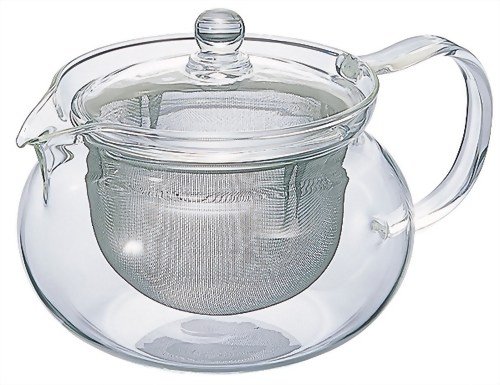
Foodal recommends Hario’s “Chacha Kyusu Maru” model as an excellent introductory pot.
Your second option is to invest in a teapot with a built-in strainer.
Alternatively, your last option is to purchase a tea ball or infuser, or use a small strainer held over the cup to catch the leaves while you’re pouring.
None of these are very expensive and they all work great to keep the leaves out of your drink.
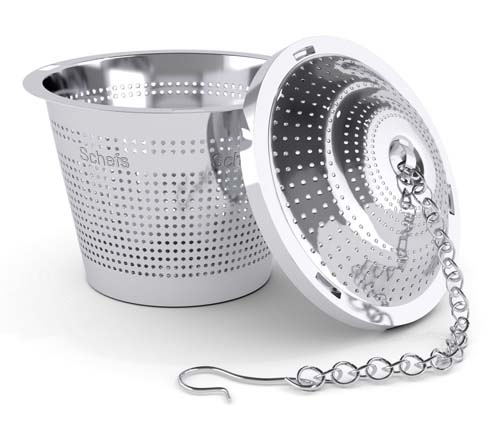
Premium Loose Leaf Infuser By Schefs
You can get a ball or infuser that is just for your cup as well, and then you can pour the water directly from the kettle into the cup and bypass the need for a pot altogether. This is nice if you’re just brewing for yourself the majority of the time.
Heat Your Water
Okay, you’re all set up. Now, if you’re a novice tea drinker, you may be under the impression that all you need to do is boil the water and pour it right over the leaves.
Interestingly, there is not a single type of tea that should be made using water at boiling temperature.
Based on the type you’re brewing, you’ll need to heat water to a very specific temperature to get the best tasting cup from that particular type.
I would recommend investing in a digital, instant-read kitchen thermometer if you plan to drink tea on a regular basis. You’ll be able to tell when the water reaches the precise temperature right away.

Foodal recommends the EatSmart Precision Pro Digital Thermometer
For both white and green varieties, the recommended water temperature is 175°F. If you drop a couple of ice cubes into boiling water, it will lower the temperature to approximately that mark right away. It doesn’t take much longer though for it to drop to 175 on its own, and the thermometer is mighty handy for judging this.
Of course, you could always time how long it takes to get to the right temperature, and thereafter simply use a timer to alert you when the water has reached the mark.
Oolong and black varieties should be steeped at 195°F. Black varieties can even handle water as hot as 205°F.
The hottest water should be used for any of the herbal choices, including Mate and Rooibos. Then, you’ll be using water at 208°F.
Heating Equipment
For heating water, you can either use a tea kettle on the stove, or use an electric water kettle.
Obviously, an electric kettle will cost you more money. But if time is of the essence for you, it will save you 5-10 minutes. The electric kettle will boil water in as little as 5 minutes, whereas a stovetop model takes 10-15 minutes.

Foodal recommends the Cuisinart CPK-17 PerfecTemp 1.7-Liter Stainless Steel Cordless Electric Kettle
Most folks who regularly consume this fine hot beverage, including those in the UK and tea drinking parts of Asia such as China, Japan, and Korea, normally opt for the electric kettle. If tea is a part of your regular routine and you drink several cups throughout the day, it might make more sense to invest in an electric kettle.
The Cuisinart model shown above would be perfect for you because it has different temperature settings for different varieties of tea, crucial for getting a great brew.
If you enjoy the ritual of tea-making as much as I do, you may prefer to take the extra time and use the stovetop version. I love the pretty stainless steel kettle sitting on my stove, and the whistle it makes when it’s ready.

Chef’s Secret 2.75-qt Surgical Stainless Steel Kettle
Unfortunately, quality kettles are very hard to find at any price. They are ALL made in either China or Indonesia by manufacters who are just trying to cut costs, and they sacrifice quality while doing so.
There is absoluately no need to go expensive here – purchase a moderately priced one and expect to junk it in under 5 years, or search secondhand stores to see if you can find an older one. The Chef’s Secret brand’s kettle appears to be the best of the lot if you want to buy new. However, I’m not a 100% certain if it works with induction ranges.
Let It Steep
Alright, your mug and tea are all set, and your water has boiled and cooled to the appropriate temperature. It’s time to make that wonderful beverage!
How long do the leaves need to steep?
Just like with the water heat level, each type has a certain amount of time it needs to infuse to give it the best flavor.
Let the leaves soak for too long, and the drink will be bitter. If you don’t give it enough time, it will be weak and watery. For these reasons, it’s important to know the exact amount of time to let your leaves steep.
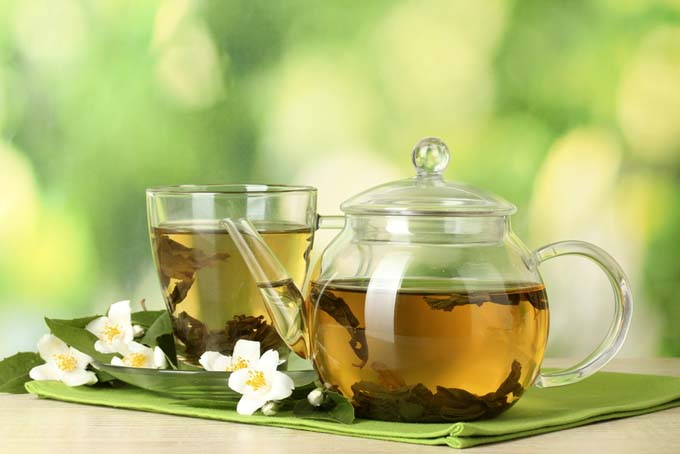
Probably due to the fact that they don’t come from the actual tea plant (Camellia sinensis), herbal products need to steep longer than any of the true teas.
If you are making Mate, Rooibos, or any other herbal tisane, you should steep them for 5-6 minutes if you’re making a drink hot drink and 8-15 minutes to make an iced beverage.
Of all of the true tea varieties, white needs to steep the longest and needs 4-5 minutes in the pot. Oolong is the next longest and requires 3 minutes to steep.
For black tea, steep 2-3 minutes, and for green, steep a mere 60 seconds. If you have a flavored green tea, you can increase that time to 2 minutes.
Brewing Equipment
Let’s talk about teapots. I LOVE teapots. I’ll probably be one of those old ladies who has 20 different ones with no room to store more, and yet continues to buy new ones that strike their fancy.
Right now I have my eye a Wedgwood “Paeonia Blush” tea set that features beautiful peonies. It’s a little pricy for my budget, so this will definitely be a splurge purchase.
Wedgwood Paeonia Blush 3-Piece Bone China Tea Set, available from Wayfair
Teapots come in all shapes and sizes, but the most important aspect to consider when purchasing one is the material with which it’s made. They can be made from glass, ceramic, porcelain, cast iron, or clay.
Each material has its pros and cons, and determining which type is the best for you use may be determined by how far you choose to dive into the culture and brewing methods.
One thing to remember is that tea originated in Asia. In Japan, tetsubin teapots are traditionally made from cast iron. In China, teapots are made of unglazed clay and are called yixing whereas in Korea, they are generally glazed and are collectively known as cha jujeonja.
All of these materials conduct and hold heat very well, which is what makes them the best substances for making teapots.
Clay
Let’s talk clay for a moment. The best yixing teapots from China are, as I said, unglazed. This is both a pro and a con.
A positive aspect of this is that, being unglazed, the flavor seeps into the clay itself over time and helps to deepen the flavor of your beverage. The negative here is that the clay is unglazed so the flavor seeps into the clay.
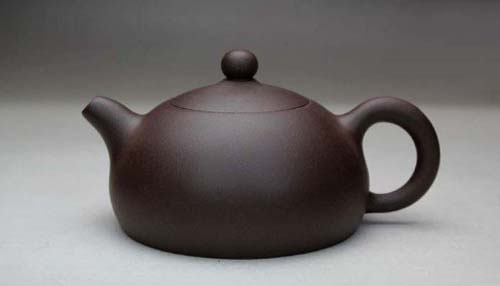
Chinese Yixing Purple Clay Handmade Half Moon Teapot
No, that is not a typo – this unique attribute is both a con and a pro. Think about it this way: if you typically drink a black variety, if you then try to brew a pot of green tea, it will come out with a bit of black flavor. You should not use the same pot to brew different varieties if you favor this material.
Other popular versions of clay teapots are glazed, so they do not present this problem. Glazed inside, the porous clay will not absorb the taste of a specific brew, and so the different varieties will not take on each other’s flavors.
Any kind of clay pot is great for maintaining heat. The only major drawback to this type of pot is that it is breakable, so if you’re known for your butterfingers, a clay teapot may not be for you.
The best Korean teapots are generally made using a Celadon style of glazing, with most of the modern examples being either a jade green or a pure whit. Both types are derived from historical examples, sometimes with some modern updates.
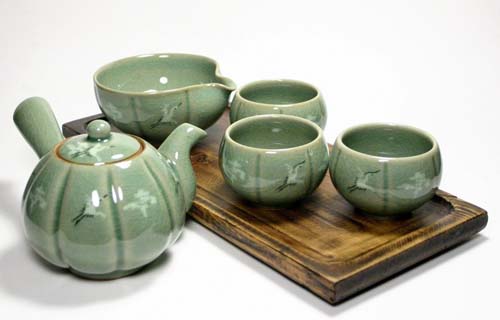
Korean Celadon Set with Teapot, 3 cups, Sookwoo/Pumpkin Style
The green style romanticizes the pre-Confucius era of Korean history are these usually very decorative, whereas the white style is much more conservative and austere. These were introduced after the country adopted Confucianism as the offical religion/philosophy.
The starkness represents the functional aspect of the form – though the white, plainer styles are truly beautiful in their own right.
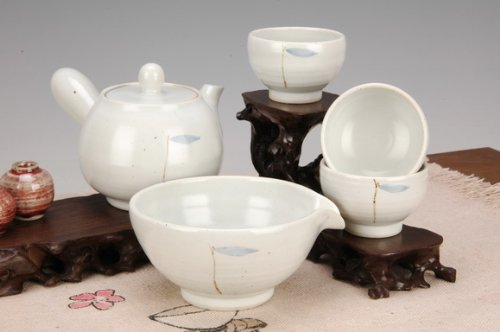
Korean Tea Set, handcrafted in Yicheon, ROK
Brown Betty
Another traditional style of glazed teapot is the Brown Betty from England. These iconic brewing devices are presented in a traditional style that most Westerners will recognize instantly.

English-Made Brown Betty Teapots, available in 2, 4, 6, and 8-cup sizes on Amazon now
Cast Iron
If what you want in a teapot is wonderful heat conduction and maintenance, but you tend to break every glass in the cupboard, a cast iron product is just the ticket.
This traditional Japanese teapot will keep your brew hot even longer than clay, and it is virtually indestructible.
TIP: Always preheat the cast iron by filling it with very hot tap water and then pouring it out prior to adding water that is the correct temperature for brewing. This will allow the iron to retain more heat to keep the liquid hotter for longer periods of time. This trick even works with clay.

Iwachu Japanese Iron Teapot Tetsubin Gold and Black Goldfish
The only major negative to traditional cast iron is the rusting aspect. You can only clean the pot with warm water, no scrubbing or soap allowed, you must dry the outside thoroughly while the vessel is still warm from rinsing, and then you must invert the pot to completely drain the inside and let it air dry.
If your pot it not dried completely before storing, rust can form inside or on the outside, and this can alter the flavor of your beverage. Supposedly, some Japanese tea aficionados tend to prefer the flavor that is affected this way.
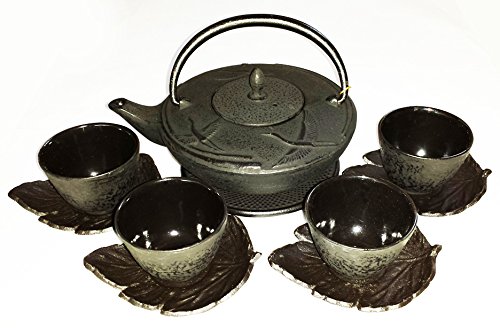
Crane Cast Iron Tea Set with a Trivet, 4 Cups and 4 Saucers
However, some of the better, newer models, are still primarily made by hand in the traditional manner, and these have enameled interior coatings to prevent rusting. This is the type I’d suggest.
I’m in love with this set, shown above.
The Beauty of Other Materials
For aesthetic purposes, you may prefer a different kind of teapot. Glass, ceramic, or porcelain versions are all beautiful options, and can be especially nice to have if looks are more appealing to you than function. (My hand is raised high here, just so you know).

800 ml Jumping Tea Pot from the famous Japanese Hario Glass Company
Glass is especially nice because you can actually see the leaves rehydrating in the water, and watch the water gradually change color. It’s a beautiful process to observe, especially if you’re brewing blooming teas that are handmade just for this purpose.
Ceramic and porcelain are just as nice because of all the gorgeous designs from which you can choose.
Relax and Enjoy
Now you have your tea brewed to perfection, and all you need to do is pour yourself a cup and enjoy it. A nice cup in the quiet of the morning before any of my children have woken up is my idea of sheer bliss.
Similarly, a warm mug while they are all taking their afternoon naps is the moment of relaxation I need to get through the rest of the day.
Optional Equipment
While the above described steps and equipment are what you need to make a cup of tea in the traditional way, there are a couple of other options available to you.
First, you can brew using a French press, which is usually used to make coffee.
Once you’ve thoroughly cleaned the press of any coffee residue, place your loose leaves in the bottom where you would normally place the coffee grinds.
Pour in the hot water and let it steep just as you would in a teapot. When you are ready to pour, depress the plunger to move the leaves to the bottom of the press.
Be careful not to push so hard that you’re squeezing the leaves, as you would with coffee.
You’re using it more as a sieve, avoiding squeezing the leaves, you can re-steep them just as you would if you were using a regular teapot.
Available in small, medium, and large sizes, the Espro Press makes an excellent brewing system.
Foodal’s number one choice for a coffee and tea press is the Espro. Unlike most presses, this one has a double filter, which means the fines stay in the pot rather than migrating to your cup.
Most French presses have cheap filters made of stamped metal on mesh thing that deform when the lever is plunged, allowing small particles to slip by. This leads to a gritty taste in the cup.
This is NOT the case with the Espro. Also, its stainless steel construction features a double wall, which means the heat is retained much longer. Check out the stellar reviews of this device on Amazon.com.
Dedicated presses are available for tea, but if you’re going to drink pressed coffee and are trying to stay on a budget, it may make sense to purchase one device for now.
If you do want a dedicated press, than you can’t go wrong with Bodum. We suggest that you take a serious look a the 34-Ounce Bodum Shin Cha Glass Tea Press.
This device is made of borosilicate glass, which means it is extremely resistant to heat and also resists shattering. Bodum is one of the better makers of brewing devices and glassware.

Bodum Shin Cha 34-Ounce Glass Tea Press with Stainless-Steel Filter
Another option available to you is to purchase an automatic tea maker. These can run a little on the high end, but basic models are also available affordably. The top of the line models will cost you several hundred dollars.
These take all of the guesswork out of brewing. They have a built-in infuser for your loose leaves, and the pots normally hold 1 liter of water, so you can make about 4 cups at a time.
Place the correct amount of leaves and water in the brewer and select the type of tea you’re brewing, and the device does the rest of the work for you.
The appliance will heat the water to exactly the correct temperature, lower the mesh basket of leaves down into the water, let the leaves steep for the appropriate amount of time, and then lift the basket out of the water once the infusion is complete.

I personally love the whole tea making ritual from start to finish, so even if I started making this tasty and healthy drink multiple times a day every day, I would rather stick to the old kettle and pot myself.
However, I know plenty of people who have no patience for ritual and would love something like this to make their lives easier. If you’re interested in one of these devices, the Breville BTM800XL One-Touch is by far the best automatic maker on Amazon.com, and it stands out above all the rest.
Depending on how you feel about it, you can make the decision yourself as to whether or not to invest a good bit of money into purchasing an automatic maker.
I have read several reviews that state that no amount of patience or attention to detail will result in as perfect a cup as one that comes from a high-end machine. That’s definitely something to keep in mind if perfection is what you’re after.
Happy Brewing
Hopefully, I’ve given you some food for thought when it comes to making a cup of this wonderful drink.
This may seem like a lot of information to digest, but it’s really a simple process once you’re familiar with the steps, the equipment, and the specifics related to each type of tea. I hope this helps!
Want to know more? Read all of Foodal’s Tea Guides and Reviews. For storage tips, read our review of the best containers, and our tea organizing and storing guide here.
About Ashley Martell
Ashley has enjoyed creative writing since she was six years old, when she wrote her first short story. She majored in English literature at the University of Montevallo. After years of professional work, she is now a stay-at-home mom of three, who uses her craft to write about her life and adventures in and out of the kitchen.


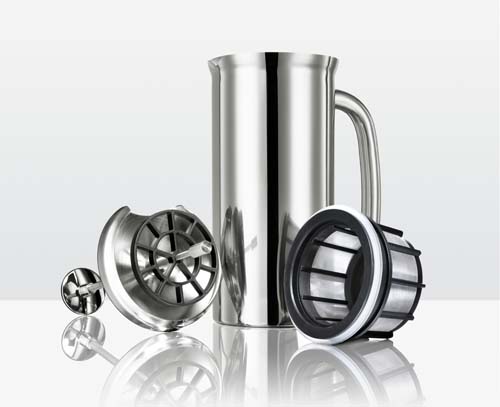

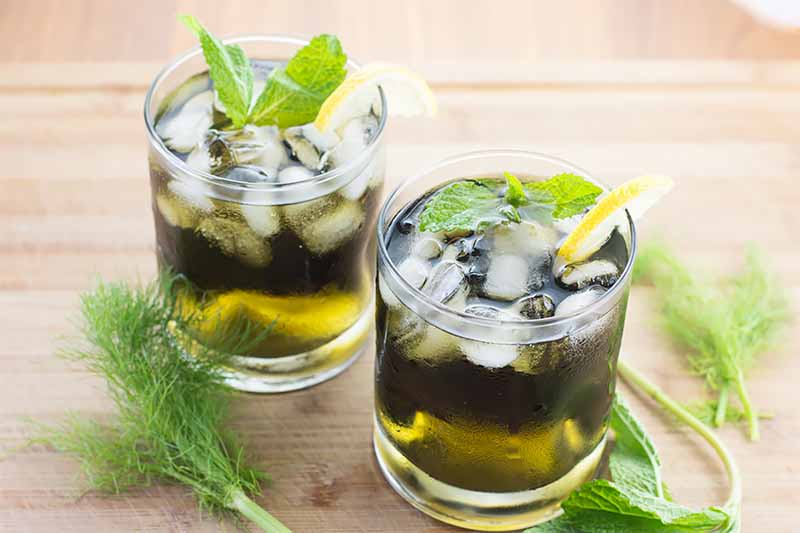
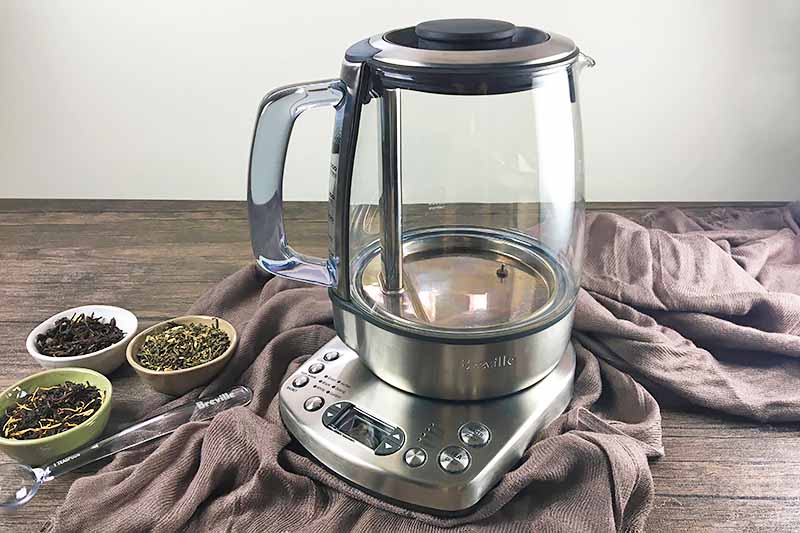
I remember that my grandmother used a Brown Betty teapot. She flatly refused to buy teabags, saying they were a waste of money and that the drink never turned out right. Now I have got older, I get what she meant. Loose leaves gives a much deeper flavour and is so much cheaper. I’ll never go back to using bags now.
I have bookmarked this great post Ashley. I love tea and I love the whole arena. This post allows me to make an informed decision on how to make my experience the best! I prefer the infusion ball you mentioned and I feel ready to purchase a teaset now. Oh, the tempature gadget is something I need for my hot beverages and for cooking. I will be sure to return to this page when I am able to purchase it. Thanks for this great article.
Wow this is great detail here. I will be honest I didn’t know that tea seemed to have so much equipment. My mom just uses regular water and tea bags but I know she has one of those glass type pots somewhere. I enjoy tea from time to time but I am more of a coffee drinker myself.
As a kid I loved loved loved to sit with my Mom in the morning and have a tea with her. As I grew up and moved out on my own I drank it less and less and switched over to coffee. A couple weeks ago I tried to make a tea and sit down and enjoy but I just can’t acquire myself to the taste any more. and It is quite disappointing because it is something that I really wouldn’t mind being able to enjoy every once in a while as a break to coffee. I wondered if maybe I wasn’t making it right so I am going to take your advice and try again! I used to love it so I don’t know why I just can’t get adjusted.
My mom would have been delighted by this page, an avid tea drinker, this page would have made her day or night which ever way said because in both times, a cup of steaming hot brew would be by her side. I on the other hand am an occasional tea drinker, when i get that occasional craving. I am more of a coffee-chocolate lover, still, the information on this page will go along way in helping me make lasting gadgets budgetary decisions on what to buy, to help me when that occasional craving strikes.
I never knew there was so much equipment involved in making tea “properly”! I am guilty of using those tea bags that have never really satisfied me, but because they are quick, I’ve somewhat fooled myself into believing they’re actually better than they are. After reading your article, and seeing all the lovely pictures of tea sets, tea pots etc, I think I’ll be spending some time on Amazon today!!
Even though I grew up thinking that the best way to make “good” tea was in the Brown Betty type of tea pot – probably because it was the way all the grown ups around me made tea at the time – I realise now that real and pleasurable tea making requires much more than that….The automatic tea maker looks fantastic, and even the Espro French press looks stunning; but the thing that’s done it for me is the glass tea maker. Being able to watch the tea leaves actively brewing in the pot, and just thinking about the beautiful flavour you will get from brewing tea the way it ought to be done, has won me over completely from tea bags. Thank you for a great post!
The pictures here are beautiful, the teapots are lovely. The tea looks exquisite. I like drinking tea and have a lot of it (bags) in my cabinet, but I don’t drink it as often as I would like. I want to fancy myself an avid tea drinker, but more often than not I always head straight for the coffee.
I like the idea of using an electric kettle. A boss I had from a previous job had one in her kitchen, very convenient. Probably if I get an electric kettle to heat my water, I’ll drink more tea throughout the day. And I’m definitely going to have to try some loose tea.
How funny that I came to this blog to find this post on tea. I just got back from the store where I replenished my stock of chamomile. This is the one that always runs out first in my home. I definitely had tea on my mind today since it is a rainy day, perfect for a nice cup. I love the Hario pot. How convenient that it has the strainer built in.
I love brewing my tea in a pot, it is a little treat to myself. It makes me feel so special even when I am alone. I have several brewing pots. I will purchase all types of tea to taste until I find my favorite. During the summer I mix black tea with cinnamon apple tea to make a unique blend. I can not keep a pitcher of the ice tea in the house it is so good.
I have discovered the joy of tea lately. I am intrigued with the vast variety of flavors available. I have to admit, I have been a boil the water and use a tea bag kind of drinker. However, I am now interested in using different leaves. The teapots in this article are so beautiful! I am going to be purchasing one in the near future.
I must confess, I’m a tea lover. But, then again, I’m from Boston. I love tea, tea pots, infusers, etc., so reading this was like Christmas morning to me. I’ve gotten lazy, and been using bags, but plan to pull out a few of my pots and indulge myself with some home brewed tea. Incidentally, some people prefer the leaves loose so they can be read after drinking. That was a custom back home, although no one I know of here does that, and I truly miss my favorite tea room. Although I have several of the tea pots above, I’ve added a few of them and the infusers, as well, to my Amazon wish list.
I never thought that there would and could be much thinking to be done when making the perfect cup. I’ve been mostly just boiling the water and throwing it on the leaves. I guess it still makes a fine brew, but I gotta try these new tips to make it even better and see if it actually makes a difference. I’ve never really thought too much of the flavor of the tea, I just like to have something to drink when surfing the web.
This is really useful. I’ve mostly used tea bags, but I’ve been testing the waters (so to speak) with loose leaf. My friends send it to me sometimes, so I’m glad I’ve found this guide. It’ll ensure I’m brewing everything correctly. I also love that I can re-steep the leaves, makes everything more economical. I’m encouraged to buy my own loose leaf tea now!
The tea connoisseur. Yes, well I’ve gone through many tea pots. Loose bulk teas are the best way that is for sure. These sets are nice. I love stuff like this too. Some people just don’t get it. There is something great about it. I have some chilled tea sitting here. It is so much better to make it yourself too. There are so many different purposes and the mixtures are endless.
I didn’t know that tea has medicinal qualities, so this is a great article to read for me. I’ve never brewed my own tea except for regular sun tea with a pouch. I don’t like to venture outside of what I already know, but knowing that it has health benefits, I’d like to try brewing my own.
I absolutely adore tea culture and often find myself quite sad that here in eastern europe we don’t have such a high tea drinking culture as in other places. Somehow in the world wars tea became a luxury item and my grandmother often tells me that the first time she drank tea was in her 30s years.
Is there a Serving vessel for AFTER the tea is brewed? In southern American Tea terms, this would be where the pitcher comes into play. But with hot tea I do not see any vessel in specification, This article makes the assumption that people will brew loose leaf tea and then let the leaves sit in the tea after the brewing is complete, that or they pull them out and let them get cold…I normally proceed to brew 1 to 3 pots of tea depending on the type of leaves I am using and without a middle “serving” vessel I usually pour my tea into quart Mason jars to either store or pour back into the pot after leave removal once all my brewing is complete. I recently saw a period peice from early 20th century England where a pub seemed to keep a pot of tea at the ready the same way American diner keep coffee at the ready I just assumed they removed the leaves.. any info would be appreciated.
If I brew a whole pot of bay leaf tea in the morning, how long is the tea good for? Will it last all day or maybe two, or do u have to brew it fresh each time?
Thanks
Most types of herbal tea are best brewed fresh, though you could allow a homebrewed tisane to cool and store it in the refrigerator for a few days the same way you might with any variety of iced tea. I’m unable to provide any more specific advice regarding the use of bay specifically as an herbal remedy – I suggest that you consult with an expert.
Thank you for your response
You’re welcome!